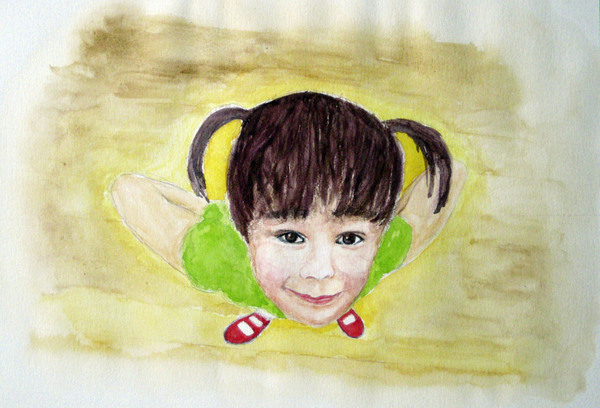

 字體:小 中 大
字體:小 中 大 |
|
|
|
| 2017/04/30 00:00:15瀏覽559|回應0|推薦12 | |
這是『洛哈同奇譚』之 『奈米奪魂記』 英語版 第一週 第一章 The Fantabulous Nanomorphique Adventure of M Hardoon Rotman An Illustrated Sci-Fi Novel by PJ Chuz [This novel is a work of fiction. Names, characters, businesses, places, events and incidents are either the products of the author’s imagination or used in a fictitious manner. Any resemblance to actual persons, living or dead, or actual events is purely coincidental.] PART ONE – PARIS CHAPTER 1 – An Animated Mural One – The little girl looked up again and again The little girl with two braided pony tails raised her head again and again, looking at the domed ceiling five stories high above. Her mother Dr. Catherine D. Denver noticed that and asked: “Cass, what did you see?” Both of them looking upward, but Catherine could not find anything unusual. The little girl, Cassandra D. Law was ten, her mother nick-named her “Cass.” Even though the domed ceiling Catherine and her daughter were staring at, was not as famous as the internationally renowned ceiling of S. Calo alle Quattro Fontane in Rome, but this dome and its entire building of Musée Pellimet des arts asiatique in Paris had its own merits, it exhibited full ingenuity of Baroque Architecture. The museum occupied an entire street block; at its south end stood this five-story high dome, but the rest of the building was three-story high. In other words, the museum consisted of a domed rotunda towering over a rectangular structure. Featuring a five-story high ceiling, the domed rotunda served as the major exhibition space. There was also a shallow balcony with ornate banisters built around the rotunda at the third floor level. Huge promotional posters often hang over the banister on the north side of the rotunda. There were six stained-glass Rose Windows evenly distributed all around the fourth story level. On top of that the spherical dome was the fifth story. The whole ceiling was coffered with diamond grid. Each diamond was shaped with a stub frame and its size from the bottom of the dome dwindled proportionally, until they reached the round sky light at the top of the dome. At the present, the night had just descended upon Paris, Catherine looked at the colorful illumination from outside, which created a wonderful and mysterious mood to the white stuccoed coffer ceiling. But with a great effort, she could not find anything wrong up there. Pellimet Museum was located in the sixteenth arrondissement of Paris, it was one of the leading institute on ancient Asiatic artifacts. Its tremendous collection embraced the entire Eastern and Southeastern Asian arts and culture, covering almost 5000 years of their development. The earliest dated piece was a jade boar from the Chinese Red Mountain Period, around 2500 B.C. Musée Pellimet was established in the mid-19th Century by the Pellimet family. In the beginning, it was a private collection. Today, was the first day of a major and special exhibition for the museum. Because the contents of this exhibition was donated to the museum by Marseille’s most famous philanthropist, Alphonse de Baux. 薄鳳池 was the Chinese name he picked for himself. De Baux family in Marseille had a long history of maintaining good relationship with China. Therefore he acquainted himself with many Chinese friends both in the business and the culture communities. But this donated collection, to a certain degree, posed great problems for Dr. Catherine Denver. That was because of the detail of the contents, majority of which were ancient Chinese no doubt, yet mixed among them, were artifacts obviously came from Mesoamerican Mayan civilization! Also, even the Chinese jade pieces were from several different locations and periods in time. As the original owner of these antiquities, Alphonse de Baux, at the time of donating, had not revealed how and when he had acquired these jade pieces, but he indicated that he would explain everything only at the opening ceremony of the exhibition. Dr. Catherine Denver felt very uneasy about the whole situation, because she was the museum’s resident archeologist. It was her responsibility to study and understand the entire collection first. To her surprise and chagrin, after thoroughly examined the pieces, more problems were identified, and some of the problems were rather very “bizarre.” |
|
| ( 創作|連載小說 ) |










